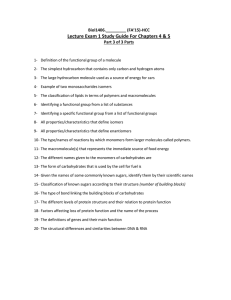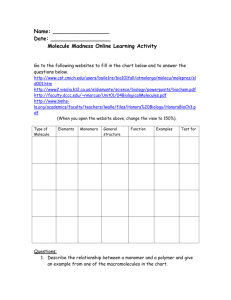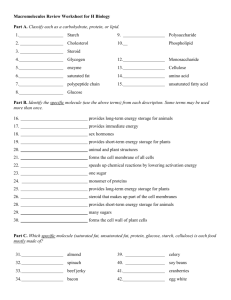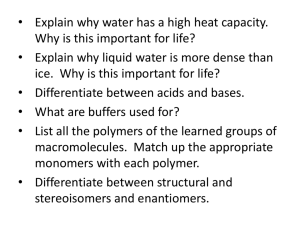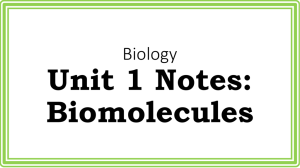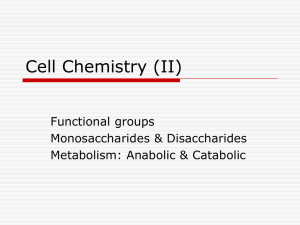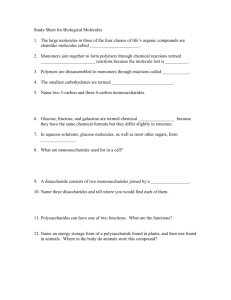Chemistry of Life
advertisement
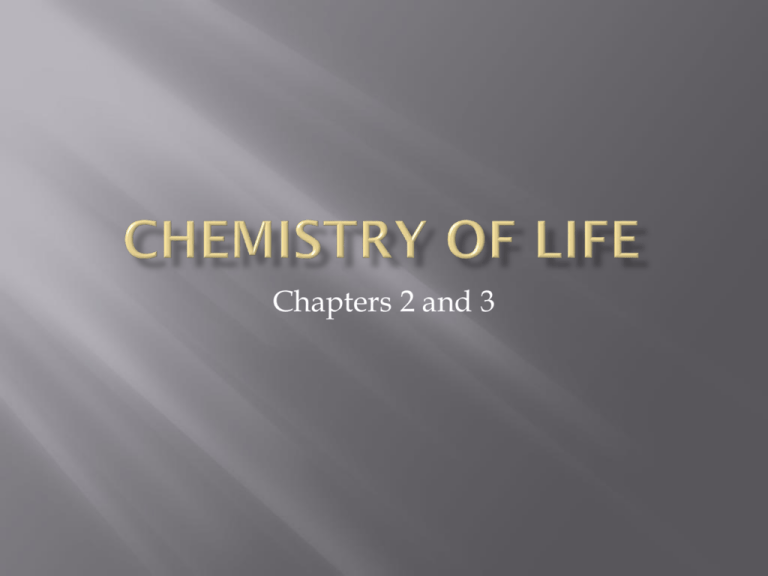
Chapters 2 and 3 It is assumed that this is all prior knowledge since you had chemistry. Atomic structure, basic terminology, octet rule and role of valence electrons in bonding. 6 key elements in biochemicals Still considered previous knowledge!! Be able to compare and contrast ionic, covalent (polar and nonpolar), hydrogen, and hydrophobic interactions. Know key examples AS RELEVANT TO LIFE Know how the bond is formed and relative strength Predict resulting charge/dipoles What is likely to happen to ionic compounds in a biological system? (water based!) How many covalent bonds does carbon like to form? Why? With what other atoms? How does the electronegativity of an atom affect its bonding tendencies? Which highly electronegative atoms do we need to worry about in Biology? Relate the polarity of the water molecule to each of the following properties of water: High heat capacity and heat of vaporization Cohesion Adhesion Ability to dissolve certain substances (which?) Now go back and discuss the significance of each of these properties with regard to living things Apply the phrase “like dissolves like” Functional Groups – what are they? What behaviors do they “attach” to a molecule? Be able to predict how chemicals will react based on their collection of functional groups. Yes, you must memorize the list and their properties. Monomers vs. Polymers How are they built/broken down? Know the reactions Other name for condensation? Be able to name monomers/polymers for carbs, proteins and nucleic acids What structural similarities do carbohydrates have? What are the roles of carbohydrates in living things? Differentiate between simple and complex sugars in terms of energy usage. Know the significance of the following monosaccharides: glucose, ribose and deoxyribose How can different sugars have the same formula? What are these called? Example? What significance does this have biologically? How are monosaccharides linked to form di-, oligo-, polysaccharides? Compare and contrast the structure and function of starch, collagen and glycogen How does the structure of lipids compare to that of carbs? Identify the functions of lipids in living things How are triglycerides made? Differentiate between the structure of fats and oils What aspect of the structure makes it such a successful energy storage molecule? Describe the structure of a phospholipid How does it differ from a triglyceride? How does this difference enable phospholipids to serve as the barrier of the cell? Differentiate between potential and kinetic energy as it applies to metabolism Provide biologically relevant examples of anabolic and catabolic reactions Diagram the energy changes that happen during anabolic and catabolic reactions and be able to explain in terms of ΔG Relate the laws of thermodynamics (1 and 2) to biological systems
